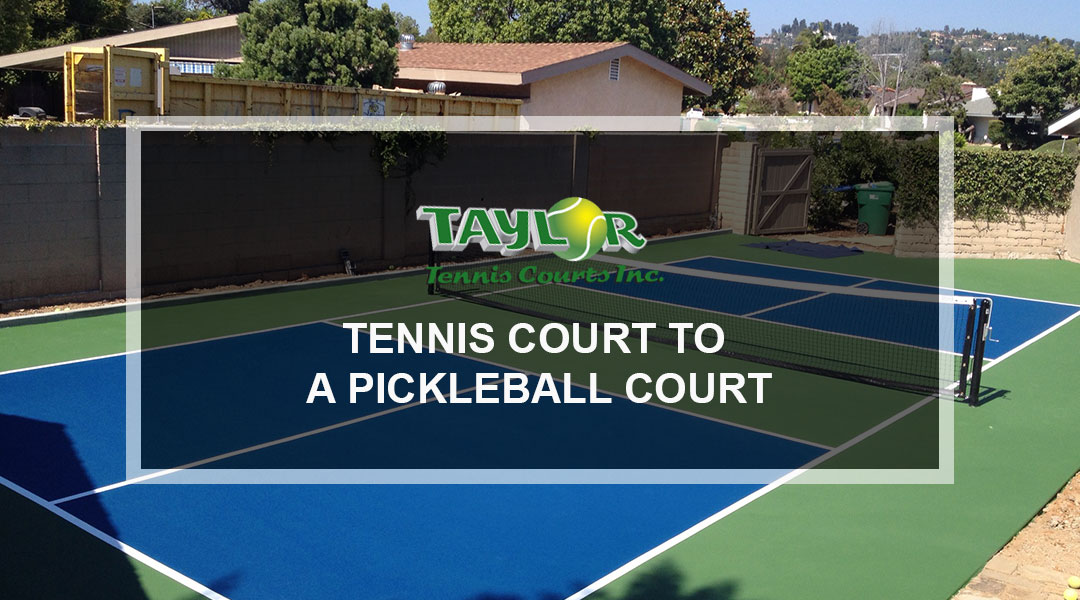Lasting Practices in Pickleball Court Construction You Must Know
As the appeal of pickleball remains to climb, so also does the requirement for sustainable practices in court construction. This approach not just addresses ecological problems however also enhances the long life and capability of the courts. From choosing green products to implementing reliable water drainage and energy-saving illumination solutions, there are numerous approaches to consider. The impact of these techniques prolongs much past the court itself. Understanding how each aspect adds to a much more lasting future welcomes further expedition right into the elaborate balance between recreational growth and ecological stewardship.
Selecting Eco-Friendly Products
Choosing green materials is a vital action in the construction of sustainable pickleball courts. The selection of sustainable materials not only decreases ecological impact but likewise improves the long life and efficiency of the court. Trick products include recycled rubber for the surface area, which supplies outstanding resilience and shock absorption while diverting waste from garbage dumps.
Furthermore, using locally sourced materials reduces transport exhausts and sustains regional economic situations. Pickleball court construction. Utilizing native woods for fence and seating can give a lasting aesthetic while making certain durability versus the elements.
Including permeable products for court foundations can further contribute to sustainability by permitting natural water drain and decreasing drainage. These options not only protect local communities but additionally promote much healthier play settings.
Effective Water Drainage Solutions
While the choice of environment-friendly materials is crucial, implementing effective water drainage solutions is similarly essential for keeping sustainable pickleball courts. Proper water drainage not only safeguards the court surface from water damages but additionally lessens erosion and drainage, advertising ecological integrity.
Effective drainage systems can include permeable paving, which allows water to penetrate the ground instead than merging on the surface area. This reduces the possibility of standing water, which can lead to mold and various other upkeep concerns. Additionally, incorporating strategically placed water drainage networks and swales can route excess water far from the court location, making sure a dry playing surface and avoiding dirt disintegration.
Using native greenery in the landscape design around the courts can better improve drainage by absorbing excess water and lowering overflow. These plants require much less irrigation and advertise biodiversity, aligning with lasting practices.
Moreover, it is crucial to consistently keep the water drainage system to ensure its long-lasting performance. This includes clearing up particles and monitoring for obstructions. By focusing on efficient drain solutions, pickleball court constructors can substantially add to the sustainability and longevity of the facility, ultimately profiting both gamers and the environment.
Energy-Efficient Illumination Options
As the need for pickleball remains to expand, integrating energy-efficient illumination choices right into court layout has actually become increasingly essential for sustainability. Standard lights systems often take in extreme energy, adding to higher functional prices and environmental effect. Adopting modern-day, energy-efficient innovations is necessary for both new constructions and renovations.
LED (Light Emitting Diode) lights sticks out as a premier choice as a result of its durability and power financial savings (Pickleball court construction). Compared to conventional lighting, LEDs make use of around 75% less power and can last as much as 25 times longer, substantially reducing upkeep expenses. Furthermore, the directional nature of LED lights reduces light air pollution, making certain that illumination is concentrated on the court instead of bordering areas.

Lasting Surface Area Alternatives
Exploring sustainable surface choices for pickleball courts has actually gained traction among building contractors and players alike. The emphasis on eco-friendly materials not only lines up with the growing environmental awareness but also improves the performance and sturdiness of the courts.
This product supplies superb shock absorption, minimizing the risk of injuries for gamers while promoting sustainability. These floor tiles are simple to install and change, and their versatility enables for various court setups.
Natural turf courts are additionally emerging as a lasting choice, advertising biodiversity and minimizing the warm island result. They need normal maintenance and water, which might not straighten with all recommended you read sustainability objectives.

Water Conservation Strategies

Another reliable method involves the setup of rainwater harvesting systems. These systems store and collect rain for use in preserving court surface areas and landscape design. This approach not only conserves drinkable water yet likewise reduces reliance on metropolitan sources.
Additionally, employing drought-resistant landscaping around the courts is essential. Native plants need much less water and are much better adapted to regional environment problems, thus reducing total water consumption. Additionally, using efficient irrigation systems, such as drip irrigation, guarantees that water is delivered directly to plant origins, minimizing evaporation and waste.
Conclusion
Integrating lasting techniques in pickleball court construction dramatically adds to ecological conservation and source performance. Making use of click to find out more environmentally friendly products, applying reliable water drainage solutions, and taking on energy-efficient lighting choices can greatly minimize ecological impact. Additionally, checking out sustainable surface area alternatives and using water conservation strategies improve the overall sustainability of these entertainment facilities - Pickleball court construction. By prioritizing these techniques, the building of pickleball courts can align with wider ecological goals while advertising longevity and performance within communities.
As the popularity of pickleball continues to increase, so as well does the requirement for lasting techniques in court construction.Picking environment-friendly products is a vital action in the construction of lasting pickleball courts. By focusing on energy-efficient lighting options, pickleball court constructors can contribute to a more lasting future while satisfying the needs of stakeholders and gamers alike.Including lasting surface area options not just boosts the performance of pickleball courts but also leads the method for executing effective water preservation techniques.Integrating sustainable techniques in pickleball court building and construction significantly adds to environmental conservation and source efficiency.